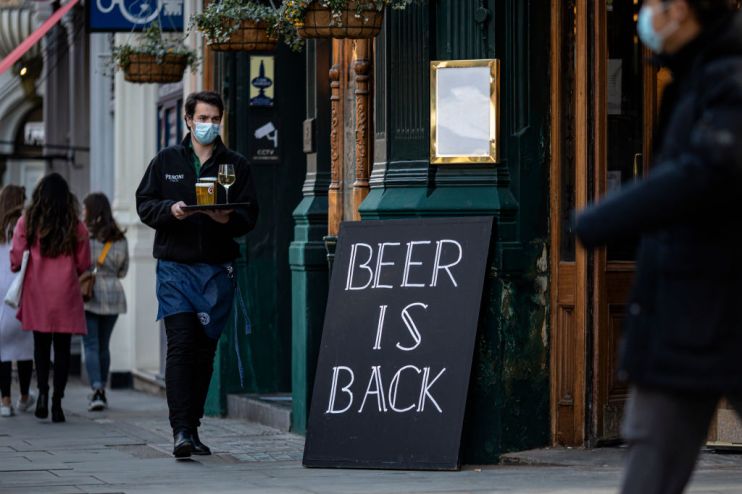UK unemployment rate unexpectedly falls to 4.8 per cent

Britain’s unemployment rate unexpectedly fell to 4.8 per cent between January and March, official figures showed this morning.
Economists had expected the unemployment rate to hold at 4.9 per cent during the first quarter of the year, given that the country was in lockdown.
The rate of employment in the UK increased for the fifth consecutive month in May, according to new data from the Office for National Statistics (ONS).
The data added to signs that Britain’s jobs market has not suffered the severe hit feared at the onset of the pandemic.
Jobs optimism soars
The number of people in employment jumped by 84,000 in the first quarter of the 2021, the first increase since the Covid crisis began.
This was a stronger increase than the median forecast of a 50,000 rise, as those classed as unemployed fell by 121,000.
The number of payroll employees still remains 772,000 below pre-pandemic levels and the largest falls have been in hospitality sector, among those aged under 25, and those living in London.
Separate data for April showed a further improvement in the labour market, with the number of people in employment jumping by 97,000 from March as firms adjusted to the lifting of Covid restrictions.
The latest figures backed up a study released yesterday which showed that jobs optimism among employers had soared to an eight-year high.
James Smith, economist at ING, said that the latest data provides further signs that the jobs market has begun to turn a corner since the start of the year.
“While the furlough scheme has succeeded in stemming the tide of redundancies we saw in the hard-hit sectors last autumn, we’re seeing some tentative improvement elsewhere.”
‘Unimaginable prospect’
Jon Hudson, fund manager at Premier Miton, said that there is a “consistent trend of unemployment falling” as lockdowns ease and the economy recovers.
“Job vacancy levels are returning to more normal levels and we are already hearing about labour shortages in certain sectors such as hospitality. An almost unimaginable prospect one year ago.”
Employment Minister Mims Davies also pointed to the rise in vacancies as a positive sign in Britain’s roadmap out of the pandemic.
“While there is more to do to make sure we support jobseekers over the coming months, these figures highlight the resilience of our jobs market and ability for employers to adapt – and through our Plan for Jobs we’re continuing to create new opportunities for people right across the country.”
Read more: London e-scooter trial to launch in the City next month
‘Unemployment could rise to 5.9 per cent’
Despite the positive data, Britain’s headline measure of pay growth rose less strongly in the three months to March.
Total pay, including bonuses, rose by four per cent in annual terms, slowing from 4.5 per cent in the three months to February.
Yael Selfin, chief economist at KPMG, expects unemployment to rise over the remainder of 2021, peaking at 5.9 per cent towards the end of the year.
“The expected pickup in unemployment is likely to come as a delayed response to employees exiting the Job Retention Scheme, with the HMRC data suggesting that furlough peaked in January this year.
“The accelerated pace of hiring in April was underscored by data from the latest KPMG-REC survey of recruitment and employment consultancies that showed permanent work placements rising at the fastest rate for 23 years.”